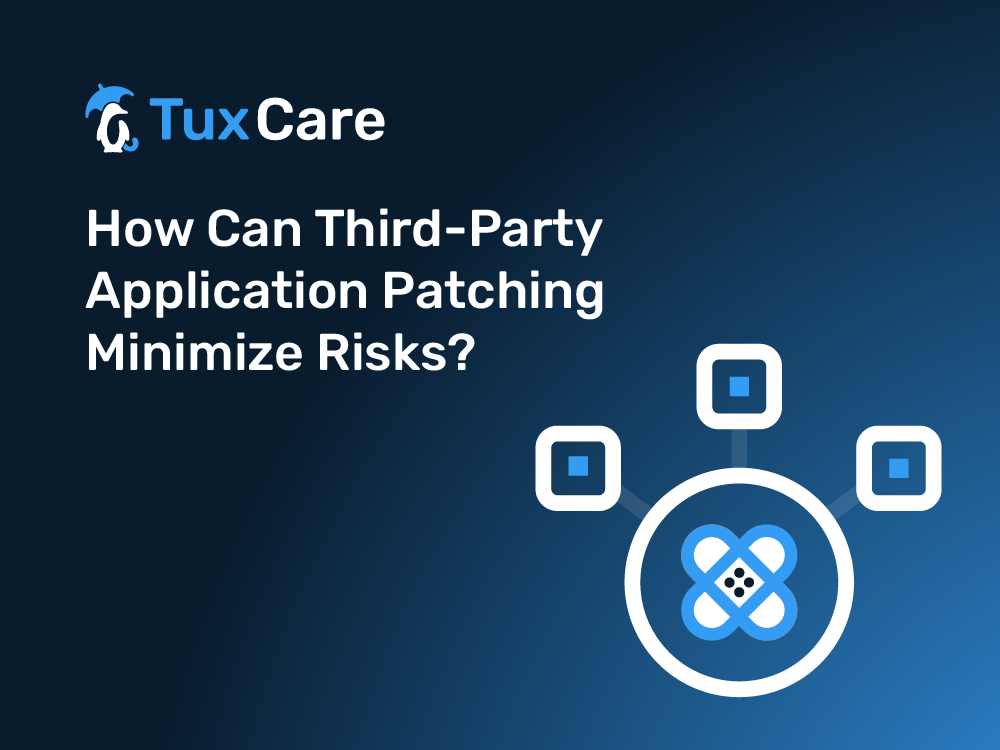How Can Third-Party Application Patching Minimize Risks?
Did you know that 75% of cybersecurity threats occur due to the vulnerabilities present in third-party applications? In this blog, we’ll be discussing how patch management is a crucial and uncomplicated fix that encourages shareholder value, streamlines risk management, and minimizes disruption significantly. But first, let’s delve into the crux of third-party applications and what they mean for businesses.
What Is A Third-Party Application?
Third-party application patching is essentially software that is designed by a vendor that isn’t the manufacturer of the device. Some common examples of third-party apps include Google Chrome, TeamViewer, and Adobe Acrobat Reader.
Since users don’t patch third-party applications often, flawed or unpatched servers are exposed to attacks and a significant loss of revenue, as well as disruption to networks.
What Is Third-Party Patching?
Third-party application patching is software that is engineered to improve the infrastructure and functionality of your network. Patch management can significantly minimize the chances of malicious actors exploiting vulnerabilities in your business’s third-party apps.
Through techniques like lateral movement and privilege escalation, attackers can extract sensitive and valuable information or data. Patching the endpoints on a company’s software can help address vulnerabilities, bugs, and risks. Without patch management, your company’s privileged data could be breached and accessed.
Why Is Third-Party Patching Important?
In the past couple of years, third-party applications have become the primary vector for attacking and exploiting risks and vulnerabilities.
Since many third-party apps have security flaws and bugs, using independent vendors for patch management can help tremendously. It also helps in satisfying the many necessary and required compliance regulations that are recommended by CISA – Cybersecurity And Infrastructure Security Agency. Risk
Independent vendors can streamline risk management significantly. Additionally, patching vulnerabilities that are present in third-party apps can improve a software’s functionality tremendously.
The Risks Of Not Patching Third-Party Applications
In 2021 alone, there were more than twenty thousand vulnerabilities, and over seventeen thousand in 2020. In fact, a couple of years ago, Home Depot experienced a security breach due to unpatched third-party apps. More than 56 million users of Home Depot had their records compromised.
The consequences of leaving third-party apps unpatched can be disastrous for businesses as it opens a catastrophic gateway for malicious adversaries to steal and exploit the data from corporate networks.
The most vulnerable exploit, Log4shell, was discovered in 2021. Due to being unpatched, there were more than a million exploits that took place since detection. In 2021, 93% of companies experienced cybersecurity breaches because third-party apps were constantly neglected and eventually put them at risk.
To encourage workflow and avoid the risk of exposure, third-party apps must be patched as quickly as possible, and an efficient way to get this done is through third-party vendors.
Benefits Of Third-Party Patching
Live patching – a way to apply security patches to unpatched software or malware – can help resume streamlining business operations as it doesn’t require the rebooting of servers and networks. Live patching and automated third-party patching can enhance the robustness of security systems and alleviate the stress that is present on IT teams.
Third-party patching can be monumental for productivity and workflow as vendors don’t adhere to patch release schedules. So, your servers don’t have to wait for vulnerabilities to be exploited before patches can be released. Live patching can help resume streamlining business operations while keeping downtime at a minimum.
Relying on a third-party vendor for patch management and risk management can give leeway to address exploited vulnerabilities before they become challenging to work around. Large businesses often schedule maintenance to upkeep their servers and networks. However, with automated live patching, this can soon become a thing of the past. While maintenance is done in monthly and quarterly cycles, it is time-consuming, nonetheless.
The expense of manual patching results in downtime along with revenue loss which ultimately makes workflow inefficient – If there are multiple changes required, it can take anywhere from a couple of hours to a handful of days. But, there is one prime solution that can eliminate these mundane tasks.
Automated live patching can automatically deploy patches without any significant effort from IT teams or rebooting the entire system. You can patch vulnerabilities immediately instead of waiting for a maintenance window as this would leave you open to attacks by malicious adversaries who are looking to exploit and extract critical data.
Third-Party Patch Management and Compliance
Businesses need to deploy security and critical patches within a month of release to keep up and maintain PCI compliance and regulations. Fortunately, to streamline the process, TuxCare’s live patching solution specifically works towards compliance efforts without IT teams investing time and energy to manually apply security patches.
The in-house IT teams deploy security patches after analyzing the vulnerability. This is conveniently done while your system is running and there is no rebooting required. Patches are also deployed without waiting for a maintenance window.
Get in touch with TuxCare’s cybersecurity experts to streamline risk analysis and vulnerability management of your servers by patching Linux, preserving IT resources, and eliminating downtime.



 Documentation
Documentation Login
Login



